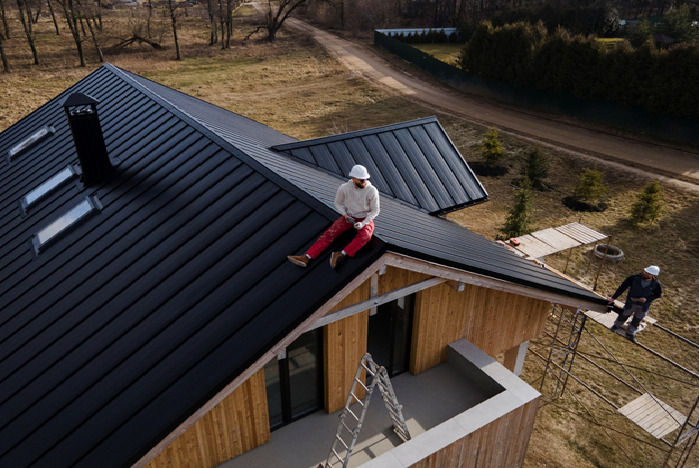
What you need to know about home insulation
More and more people are becoming interested in insulation technologies in Australia, which raises many questions. For example, is it worth using insulation at all, which technology is better, which method is cheaper, which insulation is more reliable, etc. In this article, we will try to summarize the most frequently asked questions and give simple answers to them.
Expediency of insulation and economic effect
It has been repeatedly proven that high-quality insulation allows you to halve the energy consumption for heating your home. This is especially true for private houses where gas or electric boilers are used for autonomous heating. If you live in an apartment building, then for you insulation is an opportunity to refuse additional electric heaters, which have to reinforce the communal heating system. Speaking of this, it is worth noting that such an effect can be obtained only when carrying out a full range of work, due to which the house will be completely insulated.
Let’s look at the standard heat loss scheme. The most intense air exchange goes through the ventilation ducts, so they account for 50% of all heat loss. In second place are the walls through which the building loses 25% of its heat. Then comes the foundation (15%) and the roof (10%). That is, with proper insulation of the roof, walls and foundation, heat loss can be reduced by exactly half. At the same time, you need to pay attention to your windows and doors, perhaps heat escapes due to poor insulation of openings or insufficiently high thermal insulation of structural elements. For example: a thin double-glazed window is installed that does not match your climate zone.
Now there is a lot of information that in the context of a general warming of the climate, you can save on insulation. Such a statement is absolutely not true. For example, if instead of a 100 mm layer of mineral wool, you perform wall insulation using a layer of only 50 mm. As a result, material savings will be about 40%, but the total cost of all work will be only 1.6% cheaper.
In this case, you do not take into account the following points. First, despite the general increase in the average winter temperature, periods of severe frosts still remain, and are only getting stronger. Secondly, thermal insulation works not only against cold, but also against heat, preventing your home from heating up during the summer heat. Therefore, in the summer, your air conditioners will work at the limit of their capabilities, and this is no less costly in terms of energy than heating in the winter.
Thirdly, the smaller the layer of insulation, the faster it will fail and lose its properties, which will lead to a decrease in the service life. Fourthly, it is impossible to increase the insulation or carry out local repairs. It is necessary to perform a complete dismantling of the old structure, and then re-insulate. As a result, the cost of such an operation will be at least 1.5 times more expensive than the previous insulation, on which you saved as much as 1.6%.
How to properly insulate a private house
The surest approach to home insulation is to plan all the necessary work at the project stage. This includes insulation of the foundation, walls, roofs, communications, proper ventilation and installation of heat-insulated windows and doors. In this article, we are not considering complex home insulation Sydney, but specifically the walls, roof and foundation, so we will limit ourselves to considering these stages.
If the house is already built, then it is necessary to start work from the roof. Taking into account the heat loss scheme, which was already given in the article, most of the heat leaves through the walls. But warm air always rises, so the roof is under great pressure to remove excess moisture from the room. If you start with wall insulation, then in this case the thermal load on the roof will increase dramatically, and high humidity will cause decay, leaks and, as a result, repairs. Therefore, the insulation of a private house is carried out from top to bottom: first the roof, then the walls, and lastly, the foundation. It is quite difficult to carry out the insulation of the foundation after the completion of construction, therefore it is advisable to carry out these works only if there is a basement floor.
Only wall insulation is available to residents of multi-storey buildings , and they don’t have a question – where to start. In such a situation, it is much more important to choose one of the insulation technologies, which will be discussed later. If the association of residents decided to conduct a comprehensive insulation of the entire house, then work begins with the roof. Then the floors and supporting structures are insulated. After that, thermal insulation is installed on the facade of the building.
Differences between external and internal insulation
In practice, experts do not distinguish between these technologies. It makes sense to use internal insulation only in cases where it is impossible to perform external work. For example: the architectural commission forbids changing the facade of the building. In this case, it is necessary to carry out a careful calculation and select the most vulnerable sections of the wall for installing internal thermal insulation. Full insulation of the wall from the inside is necessary only in cases where it is impossible to do without it. The problem is that as a result, you deprive yourself of living space, and create optimal conditions for the freezing of the walls, which is fraught with their destruction. After all, thermal insulationworks in both directions and prevents not only the penetration of cold from behind the wall, but also the heating of the walls from the inside. The first sign of freezing of the walls is the appearance of mold and fungus inside the room.
As for external insulation, this technology is more rational, because. protects not only your comfort, but also the wall of the building. At the same time, you do not lose living space, and the work does not interfere with your living. But such a technology is more difficult in terms of implementation, requires a greater consumption of materials and, as a result, is more expensive, especially if you have to work at high altitude, using the labor of industrial climbers.





No Comment